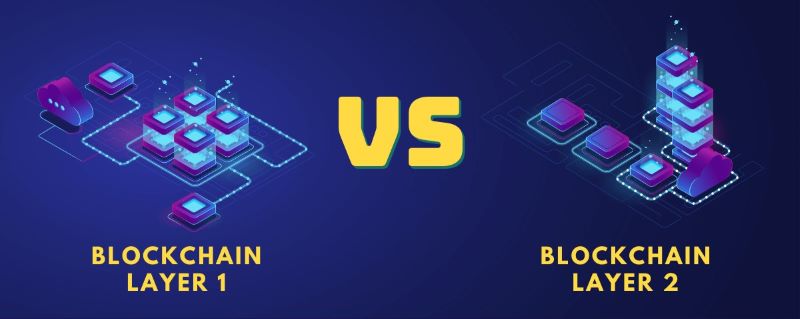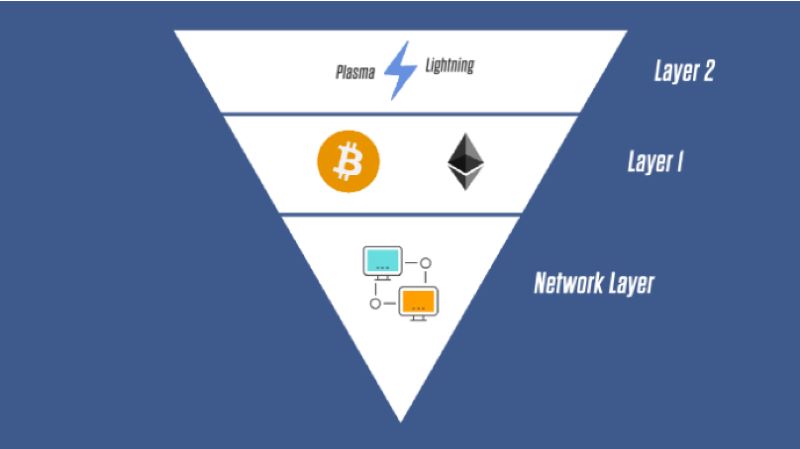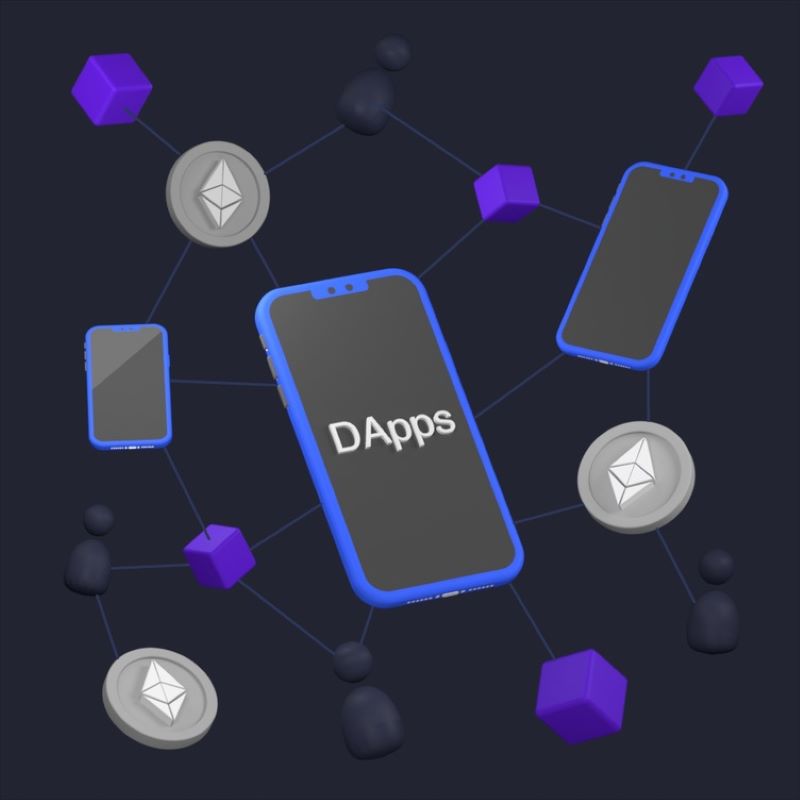Blockchain Showdown: Layer 1 vs Layer 2 Unraveled
In the world of blockchain, the battle is real. The blockchain layer 1 vs layer 2 debate echoes through the digital realm. It’s about how we scale up. Do we bulk up the base or boost the top? Layer 1 is like the roots of a tree, it’s all about the base blockchain. Layer 2 acts like the branches, reaching further, making things faster. Let me break down these layers for you. With better understanding, you’ll see why this showdown matters to your digital dollars. It’s not just tech talk; it’s the future of transactions and trust. Join me on a deep dive to unravel these layers, their quirks, and why they could reshape how we think about money online.
Understanding the Basics of Layer 1 and Layer 2
Defining Blockchain Fundamentals and Distributed Ledger Technology
Let’s break it down, what is a blockchain? It’s a way to keep records that’s really safe from tampering. It’s like a digital ledger where copies are spread out over many computers. This is distributed ledger technology.
What about the process of adding records? All around the world, special computers called nodes agree on new entries. This keeps the blockchain honest and trusted. But as more people use it, the system can slow down, making folks wait a long time. This is where we talk about scalability – ensuring the system can handle lots of traffic without a hitch.
Comparing Base Layer Blockchain to Second Layer Solutions
Now, let’s chat about layer 1, the base layer blockchain. Think of Bitcoin or Ethereum. They are like the main roads of blockchain traffic, where all the action happens. The thing is, these roads can get crowded, and traffic jams happen (we call it network congestion). Then, making a transaction costs more and takes longer.
The solution? Second layer – think of it as building a skyway over the main roads. By using a second layer, you can avoid traffic below. Some examples are Lightning Network for Bitcoin, and rollups for Ethereum. These help more transactions happen at once (we say it boosts transaction throughput), making everything faster and cheaper.
Simple, right? Folks can choose the fast lane without clogging up the main road, and this is layer 2 making magic happen. Layer 1 is the foundation, while layer 2 is the speedy upgrade on top. They work together to make sure you can do your blockchain thing without a fuss.
So, here’s the deal: layer 1 and layer 2 have the same goal – to make using blockchain smooth and efficient for everyone. Whether it’s buying a coffee or sending money to a friend, we want it quick and easy. Both layers play a part; layer 1 keeps the core secure and decentralized, and layer 2 deals with all the extra traffic. Together, they’re solving the big puzzle of making blockchain ready for loads of users.
Remember, with great blockchain power comes great responsibility, to keep it fast, affordable, and safe. That’s our mission, to make sure everyone gets where they’re going on the blockchain highway without any roadblocks!
The Scalability Solutions: Enhancing Transaction Throughput
The Blockchain Scalability Trilemma and Its Impact on Performance
Blockchain is a team sport. It’s like a puzzle. Every piece must fit just right. This puzzle has a tricky part I call the blockchain scalability trilemma. It’s a tricky balance between keeping the network safe, running quick, and letting everyone join. Think of a game where you need to run fast, carry lots of stuff, and stay away from trouble. That’s like what blockchains try to do.
First, they squeeze as many transactions as they can through the network. But like a road during rush hour, things can get jammed up. That’s when you notice delays and you might have to shell out more cash to get where you’re going (I’m looking at you, Ethereum gas fees).
Now let’s unpack why this happens. The main issue is that cool stuff like smart contracts and dApps need space to work on blockchain. But there’s only so much room to go around. Some blockchains can get full, like a backpack on the first day of school. When too many people want to use it, we hit a roadblock. We call this network congestion, and it’s a major pain when you’re in a hurry.
Layer 1 vs Layer 2 Scaling: Differing Approaches to Manage Network Congestion
So how do we fix this? There are two main ways: layer 1 and layer 2 scaling. Think of layer 1 as the ground floor, the base of the building. It can support only so many people before it gets full. That’s our base layer blockchain, like Bitcoin’s ground level. We can tweak it to hold more, but there’s a limit.
Layer 1 is about making the base rules better. Like changing up the consensus mechanisms – those are the rules about how we agree on what goes on the blockchain. We can shift from proof of work to proof of stake. That’s a bit like going from a big, bulky lock to a smart lock on your door. It can be quicker and doesn’t need as much power to work.
Then there’s layer 2, the upstairs if you will. It’s like adding another floor to deal with the overflow from downstairs. These are things like Lightning Network for Bitcoin or rollups for Ethereum. They take some of the heavy lifting off the main floor. They keep things running smooth without everyone having to be in the same spot.
Layer 1 changes the core. It’s like upgrading the whole building. Layer 2 adds on top. It’s like a quick fix, adding space without changing the ground floor. Both have their ups and downs. Weigh the pros and cons before picking a side in this showdown.
Remember, layer 1 deals with direct changes to the blockchain itself. Layer 2 uses extra systems linked to the main blockchain. They work together like buddies to get things done without stepping on each other’s toes.
In short, solving the jam in blockchains means playing with both layer 1 and layer 2 solutions. It’s like trying to clear up traffic. We make better roads and maybe add a fast lane or two. In this great blockchain showdown, we’re all just trying to keep things rolling along without a hitch.
Delving into Layer 1 and Layer 2 Mechanisms
How Consensus Mechanisms Like Proof of Work and Proof of Stake Shape Scalability
Let’s look into how blockchain works at its core. We talk about “consensus mechanisms” a lot. These are rules to agree on what is true in a blockchain. We’ve got two big ones: proof of work and proof of stake.
Proof of work, which Bitcoin uses, has computers solve puzzles to validate blocks. It’s like a race to see who can finish first to add a block to the chain. It’s safe but slow and costs a lot of energy.
Now, proof of stake is different. Here, the more coins you have, the more power you get for validating. Think of it as holding a stake in a huge virtual company. It’s much faster and saves energy. But there’s a catch. It can make the rich, richer. This is because those with more coins can validate more and earn more.
Both help with scalability but in different ways. With proof of work, we hit some limits quickly because of the high energy cost and slow speed. With proof of stake, however, we can scale much more. That’s because it’s faster and cheaper. So, we can process more transactions in less time without making it too expensive.
Exploring Off-Chain Solutions such as State Channels and Sidechains
Now, imagine you’re at a fair. Each ride is a transaction. If you had to stand in line for tickets every time, you’d spend all day in line! Off-chain solutions are like an all-day pass. They let you do lots without waiting each time.
Enter state channels and sidechains. They’re our off-chain heroes. State channels open a private lane between users. This is like whispering secrets so no one else hears. You can whisper as much as you want and settle the final score later. This helps a ton because the main blockchain doesn’t get clogged with every little whisper.
Sidechains, on the other hand, are like mini blockchains. They run next to the main one and have their own rules. You can hop on, zip around as you like, and hop back off. This takes work off the main blockchain. It keeps things moving fast since the big chain doesn’t have to do it all.
Lastly, we can’t talk scaling without mentioning nesting blockchains. They’re like Russian dolls. Smaller chains live inside bigger ones. This adds even more lanes for our transactions, which in turn helps with speed and cost.
So, remember, when it comes to blockchains, there are two main ways to scale: make the main road bigger (layer 1) or build more side roads and shortcuts (layer 2). Each has its role. Our job is to find the right mix that keeps transactions fast, cheap, and safe. With clever use of sidechains, state channels, and other cool tools, we can help our blockchains handle the load without breaking a sweat.
Evaluating Scalability Impact on Users and Developers
The Influence of Transaction Fees and Ethereum Gas Fees on User Experience
When you send money or use a dApp on Ethereum, you pay gas fees. These fees can get really high, especially when lots of people want to use the network at the same time. This is because the Ethereum layer 1 can only handle so many transactions at once. Imagine a busy highway; if too many cars are on the road, traffic jams happen. In blockchain, we call this network congestion.
Layer 2 solutions, like Lightning Network or rollups, help by moving some traffic off the main highway. This means you can send transactions quicker and usually for less money. It’s like having a special lane for fast travel. For users, this is great because they don’t have to wait long or pay huge fees.
Developers also like this because their dApps can work faster and smoother. When gas fees drop, it’s easier for folks to use these apps. This means more people might give them a try, which is a win for everyone.
The Role of Decentralized Applications (dApps) in Driving Layer 2 Adoption
Now, let’s talk about dApps, the apps built on blockchain. These apps are a big deal on networks like Ethereum. They can do all sorts of things, like games, finance, and more. Because the base layer blockchain, Ethereum, can be slow and pricey, people started making dApps on layer 2. This lets users do things cheaper and faster.
Making things faster isn’t just about comfort. It’s about what we expect from technology today. We want our apps to work right away. If a dApp is slow or costs too much to use, people might not want to use it. That’s why layer 2 solutions are crucial. They keep making sure that as more people use blockchain stuff, it still works good.
One more thing: security. It’s top of mind for everyone. Good news is, layer 2 tries to keep things as safe as the main layer. This is tricky but important, because nobody wants to use something that isn’t safe. So, even as we speed things up, we keep working to keep them secure.
In the end, both users and developers care a lot about how well a blockchain works. Fees, speed, and security are what can make or break the experience. As an expert in this field, I’ve seen how important it is to keep improving our tech. Layer 1 and layer 2 solutions must work together, like best friends, to give everyone the best experience on blockchain.
We’ve covered the basics and the deep dive: blockchain layers and how they work. We cut through tough tech talk to see how Layer 1 and Layer 2 add to blockchain strength. From the ground up with blockchain core ideas, to seeing how Layer 1 differs from Layer 2, we explored it all.
We tackled the big problem of keeping things fast and smooth on a busy network. We looked at how the trilemma of blockchain scalability is a tough nut to crack. We then compared how Layer 1 and Layer 2 take on network jams differently.
We went under the hood with consensus stuff like Proof of Work and Proof of Stake and peeked at off-chain tricks like state channels and sidechains.
And it’s not just about the tech. We saw how this affects you, with stuff like fees and how dApps make Layer 2 take off.
Here’s the scoop: Layer 1 builds a strong base, and Layer 2 makes it all move fast. Understanding both layers matters because it shapes the future of how we use the web. Keep your eyes on these layers; they’re big game changers for users and makers in the digital world.
Q&A :
What is the difference between Layer 1 and Layer 2 blockchain?
Layer 1 blockchain refers to the base architecture of a blockchain network, such as Bitcoin or Ethereum. It encompasses the core framework responsible for validating transactions and maintaining consensus among nodes. Layer 2, on the other hand, consists of off-chain solutions built on top of a Layer 1 blockchain to enhance its scalability and efficiency. Layer 2 solutions, like Lightning Network for Bitcoin or various rollups for Ethereum, help to process transactions more quickly and affordably by handling them off the main chain.
How do Layer 2 solutions improve blockchain scalability?
Layer 2 solutions enhance blockchain scalability by handling transactions off the main blockchain (Layer 1). By doing so, they reduce the burden on the network, allowing for more transactions to be processed in a shorter amount of time. Examples of Layer 2 solutions include state channels, sidechains, and rollups. These mechanisms allow for multiple transactions to be compressed into a single one, which is then finalized on the main chain, resulting in improved throughput and lower fees.
Are Layer 1 blockchains obsolete with the development of Layer 2?
No, Layer 1 blockchains are not obsolete with the development of Layer 2. In fact, Layer 2 solutions rely on the underlying security and decentralization of Layer 1 blockchains to function. Layer 1 is essentially the foundation, providing the fundamental rules and structure for the network. Layer 2 solutions are enhancements that enable higher transaction throughput and speed, but they do not replace the need for a robust and secure base layer.
Can Layer 2 solutions work across different Layer 1 blockchains?
Layer 2 solutions are usually designed to work specifically with a certain Layer 1 blockchain. However, some projects are working toward enabling interoperability between different blockchains. This would mean a Layer 2 solution on one blockchain could communicate and interact with another Layer 1 blockchain. This concept is still in development and has not been widely implemented yet.
Is it safe to use Layer 2 solutions for my blockchain transactions?
Layer 2 solutions are generally considered safe to use as they inherit the security properties of their underlying Layer 1 blockchain. Developers of Layer 2 protocols prioritize security to maintain users’ trust. However, it’s important to recognize that the security guarantee of a Layer 2 solution is also contingent on its specific design and implementation. Therefore, users should do their due diligence and understand the risks involved before fully utilizing Layer 2 solutions for their blockchain transactions.




RELATED POSTS
Blockchain Revolution: Blockchain applications beyond cryptocurrency
Explore the vast applications of...
Smart Contract Security: Essential Resources to Lock Down Your Code
Discover how to evaluate smart...
Peaq Crypto: A disruptive Blockchain platform
Peaq Crypto, a high-performance layer...
Join the NODEPAY Airdrop today – Easy to Earn Points
Looking to explore the world...
The Backwoods Game: Is it the next big hit on Solana?
With engaging action gameplay, stunning...
Security Challenges in DeFi: Navigating the Uncharted Waters Safely
Protect Your DeFi Applications from...
Blockchain Adoption Unveiled: Are Industries Embracing the Change?
Is blockchain widely used? Explore...
Examples of Secure Blockchain Implementations: Unveiling Industry Innovations
Examples of secure blockchain implementations...
How does blockchain increase transparency: How Delivers Transparency
How does blockchain increase transparency?...
Blockchain Revolution: Benefits of blockchain for businesses
"Enhance Business Processes with Blockchain....
Blockchain Basics: Unlocking the Mysteries of Modern Cryptography
Understanding the Cornerstones of Blockchain...
Kraken Launched Layer 2 Ink with $25 Million Support from Optimism
In a landmark move within...
Starknet: A Layer-2 scaling solution for Ethereum
Starknet is rapidly gaining traction...
Blockchain Beyond Bitcoin: Future Applications Transforming Industries
Revolutionize healthcare with blockchain tech....
Unlocking the Mystery: Who is Satoshi Nakamoto Really?
Who is Satoshi Nakamoto? Tracing...
Not Pixel Airdrop – Optimize Profits from Pixel
To optimize profits from Not...